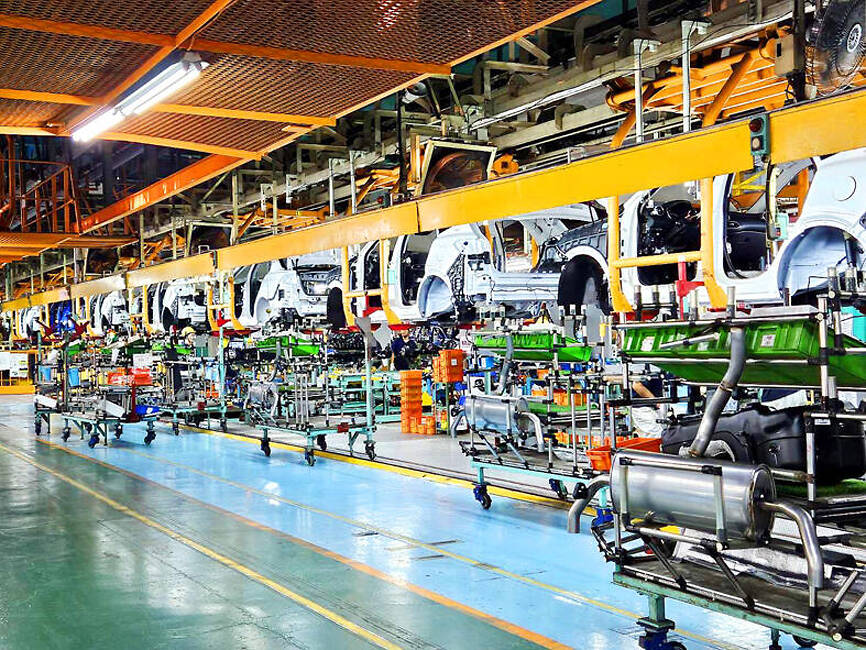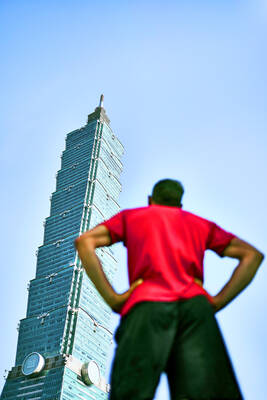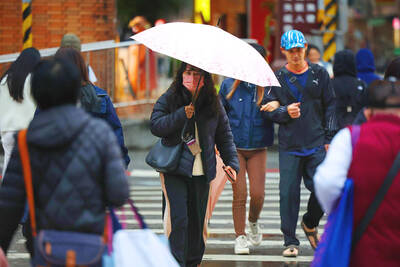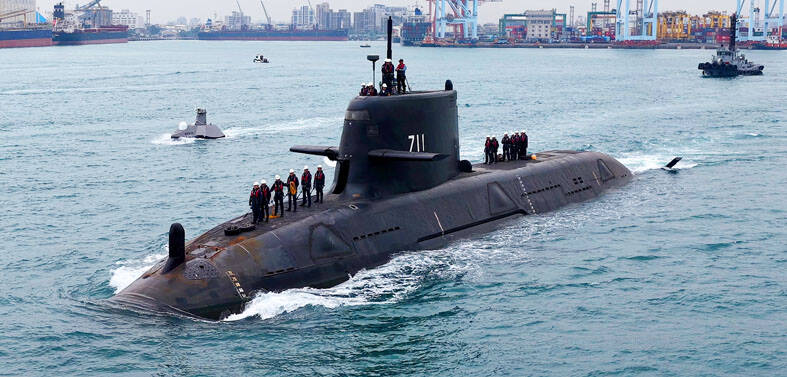The US’ tariff polices are expected to hurt Taiwan’s old-economy industries more than their tech counterparts, as it is harder for the traditional industrial sector to relocate production to the US to avoid tariffs, economics experts said.
The White House on Friday announced a 20 percent blanket tariff on Taiwan, down from the 32 percent it unveiled on April 2.
The government said the 20 percent is provisional and that it is seeking a lower levy through further negotiations.

Photo courtesy of the Taiwan Transportation Vehicle Manufacturers Association
Chung-Hua Institution for Economic Research (CIER) vice president Wang Jiann-chyuan (王健全) on Friday said that US President Donald Trump’s tariff policies seek to encourage manufacturers to invest in the US and make“made in the US” products.
“However, not all local industries can afford to move to the US,” he said. “Old-economy industries would not be able to avoid the high tariffs imposed by the Trump administration and would bear the brunt of the levy, as they do not have sufficient US investments.”
An industry that wants to expand to the US needs a high gross margin to cushion high product costs abroad and must have advanced automation to deal with the labor shortage there, Wang said.
That industry also needs to build a cluster and forge a comprehensive supply chain in the US market, and its investments must meet demand, he added.
High-tech industries such as chip makers, integrated circuit packaging and testing providers, and artificial intelligence suppliers have the capability to expand to the US, but many old-economy firms would be left behind, Wang said.
Unlike contract chipmaker Taiwan Semiconductor Manufacturing Co, which is investing US$65 billion in Arizona and has pledged to invest an additional US$100 billion in the state, with a gross margin of 50 percent, many old-economy companies only have a gross margin of less than 10 percent or even 3 to 4 percent, he said.
“It is hard for old-economy manufacturers to follow tech giants and move production to the US,” Wang said.
Since 2022, many old-economy industries had invested large amounts in Southeast Asian countries, as many of their customers asked them to go there under the “Taiwan plus one” initiative, he said.
“Now several Southeast Asian countries also face US tariffs, and their rates are at about the same level as Taiwan’s, so it would not be cost-efficient for Taiwanese old-economy firms to go there,” Wang said, referring to a 20 percent levy for Vietnam, and 19 percent for Thailand and Cambodia.
In addition to the US tariffs, Taiwanese traditional manufacturers have to deal with things such as the need to build an industrial cluster, and deal with labor and electricity issues in Southeast Asia, he said.
The old-economy sector would also be affected by the appreciation of the New Taiwan dollar, which has soared 9.18 percent against the greenback since the beginning of the year, Wang said.
Supply Management Institute head Pai Tsung-cheng (白宗城) said that many old-economy industries, which are already in trouble, are expected to go from bad to worse due to the tariffs and foreign exchange losses.
Some manufacturers have given up due to small profit margins, but their products are fundamental to many industries, Pai said, referring to producers of fasteners such as screws and bolts.
“The government should not ignore traditional industries, as many, including hand machines, machine tools and metal parts makers, are likely to be hit hard by the tariff,” Pai said. “These old-economy firms could go under without assistance, which would dent the supply chain.”

US climber Alex Honnold is to attempt to scale Taipei 101 without a rope and harness in a live Netflix special on Jan. 24, the streaming platform announced on Wednesday. Accounting for the time difference, the two-hour broadcast of Honnold’s climb, called Skyscraper Live, is to air on Jan. 23 in the US, Netflix said in a statement. Honnold, 40, was the first person ever to free solo climb the 900m El Capitan rock formation in Yosemite National Park — a feat that was recorded and later made into the 2018 documentary film Free Solo. Netflix previewed Skyscraper Live in October, after videos

NUMBERS IMBALANCE: More than 4 million Taiwanese have visited China this year, while only about half a million Chinese have visited here Beijing has yet to respond to Taiwan’s requests for negotiation over matters related to the recovery of cross-strait tourism, the Tourism Administration said yesterday. Taiwan’s tourism authority issued the statement after Chinese-language daily the China Times reported yesterday that the government’s policy of banning group tours to China does not stop Taiwanese from visiting the country. As of October, more than 4.2 million had traveled to China this year, exceeding last year. Beijing estimated the number of Taiwanese tourists in China could reach 4.5 million this year. By contrast, only 500,000 Chinese tourists are expected in Taiwan, the report said. The report

Temperatures are forecast to drop steadily as a continental cold air mass moves across Taiwan, with some areas also likely to see heavy rainfall, the Central Weather Administration (CWA) said. From today through early tomorrow, a cold air mass would keep temperatures low across central and northern Taiwan, and the eastern half of Taiwan proper, with isolated brief showers forecast along Keelung’s north coast, Taipei and New Taipei City’s mountainous areas and eastern Taiwan, it said. Lows of 11°C to 15°C are forecast in central and northern Taiwan, Yilan County, and the outlying Kinmen and Lienchiang (Matsu) counties, and 14°C to 17°C

STEERING FAILURE: The first boat of its class is experiencing teething issues as it readies for acceptance by the navy, according to a recent story about rudder failure The Hai Kun (海鯤), the nation’s first locally built submarine, allegedly suffered a total failure of stern hydraulic systems during the second round of sea acceptance trials on June 26, and sailors were forced to manually operate the X-rudder to turn the submarine and return to port, news Web site Mirror Daily reported yesterday. The report said that tugboats following the Hai Kun assisted the submarine in avoiding collisions with other ships due to the X-rudder malfunctioning. At the time of the report, the submarine had completed its trials and was scheduled to begin diving and surfacing tests in shallow areas. The X-rudder,